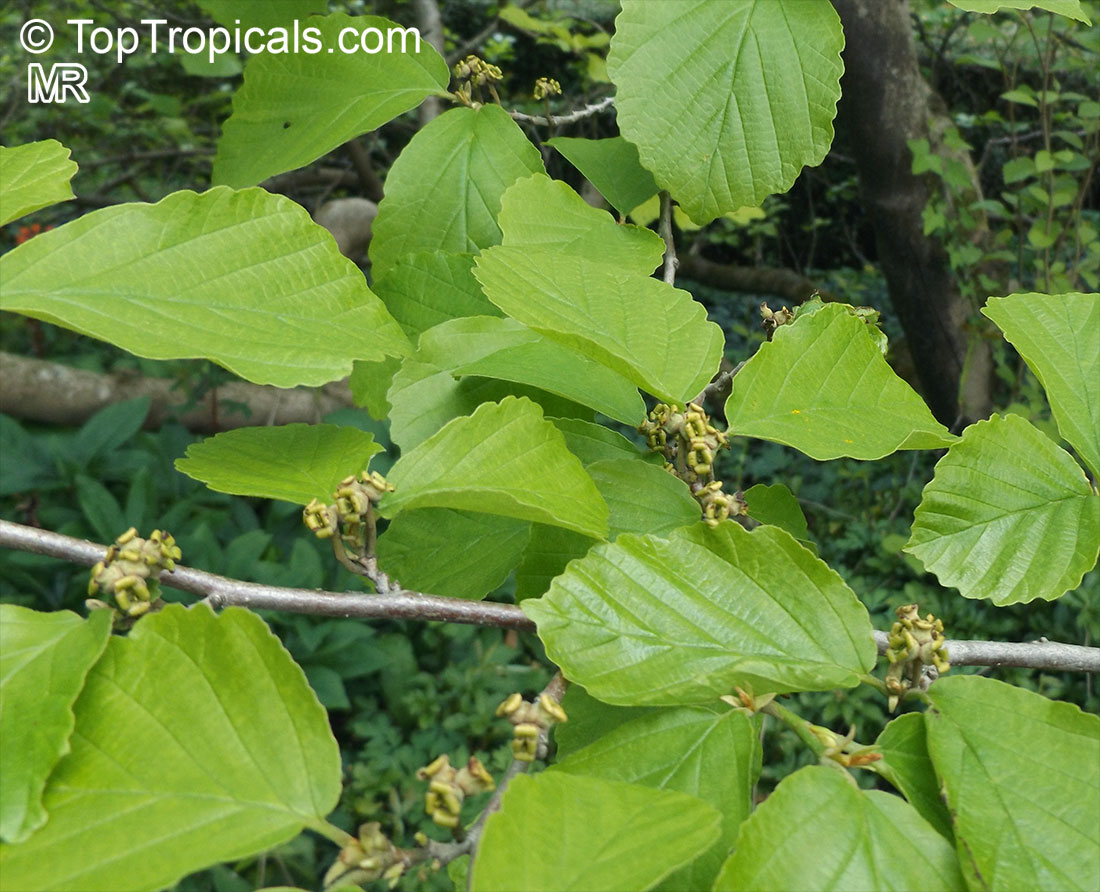Hamamelis virginiana (American Witch-Hazel)
Top Tropicals Plant Encyclopedia
Botanical name: Hamamelis virginiana
Common name: American Witch-Hazel
Family: Hamamelidaceae
Origin: Eastern North America








Hamamelis virginiana, commonly known as the American Witch-Hazel, is a native deciduous plant of Eastern North America from the Hamamelidaceae family. This large shrub reaches between 5 to 10 feet in height and grows best in full sun or semi-shaded locations and requires regular watering for optimal growth. The bright yellow to orange blooms, which appear in clusters, blossom in mid-fall and last until late fall.
The foliage of the American Witch-Hazel turns vibrant shades of yellow, orange and red during the autumn months before falling and leaving the plant semi-dormant during winter. The plant tolerates cold temperatures down to 30s F for a short time and is mature cold hardy in USDA Zones 9 to 11.
In regions that experience harsher winters, American Witch-Hazel can be grown in pots and brought indoors. To ensure the health of the plant, it should be kept in soil which is well-draining and the pot should be placed in a sun-filled, yet cool spot indoors. Water regularly and keep the soil slightly moist throughout, but be careful not to overwater. During the late winter and spring months, the plant will require a slightly higher fertilizer dosage to promote healthy growth, with a potentially higher rate of organic nutrients.
The American Witch-Hazel has many ethnomedical uses and is known for its astringent shell extract and healing properties. Tea brewed with the leaves and bark have long been used to treat pain and inflammation. Additionally, the extract is used in various beauty and skincare products, while the leaves are used in dried flower arrangements.

